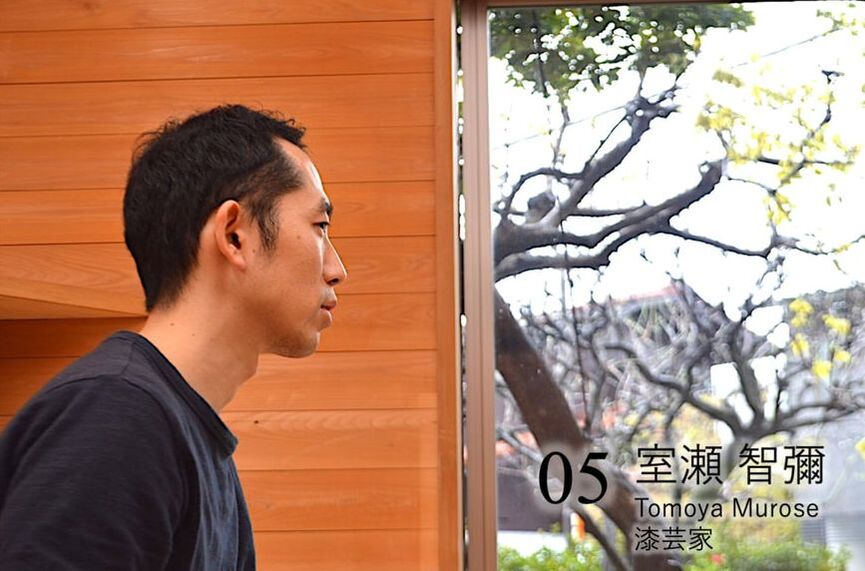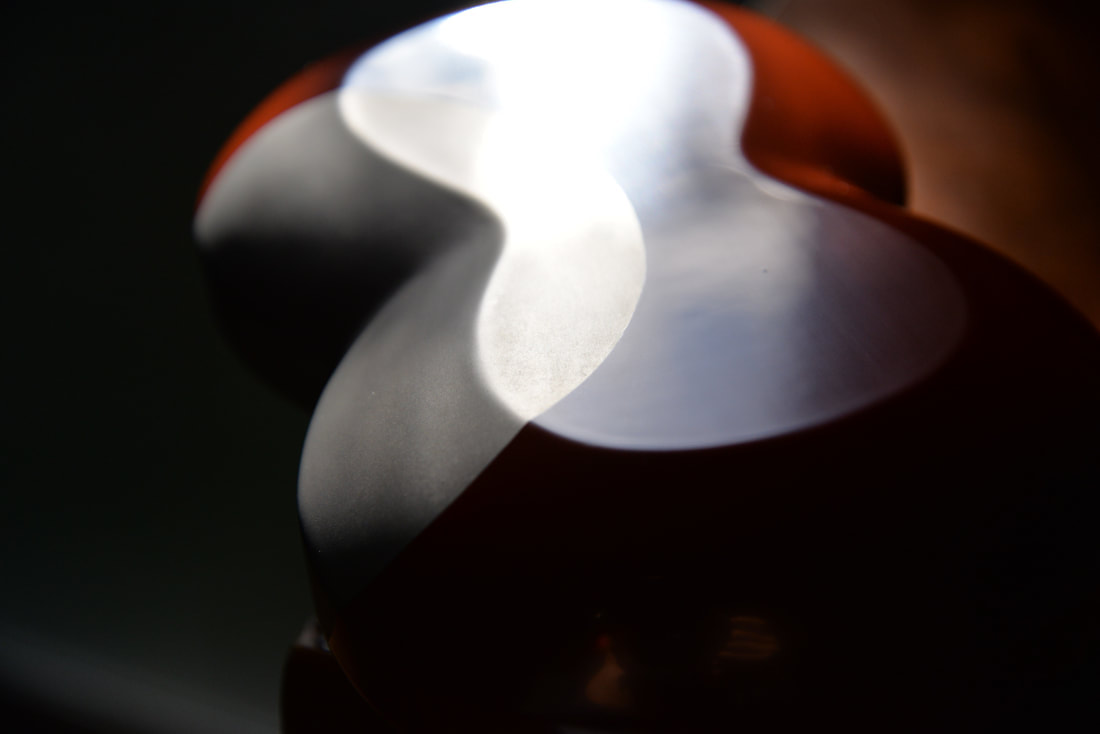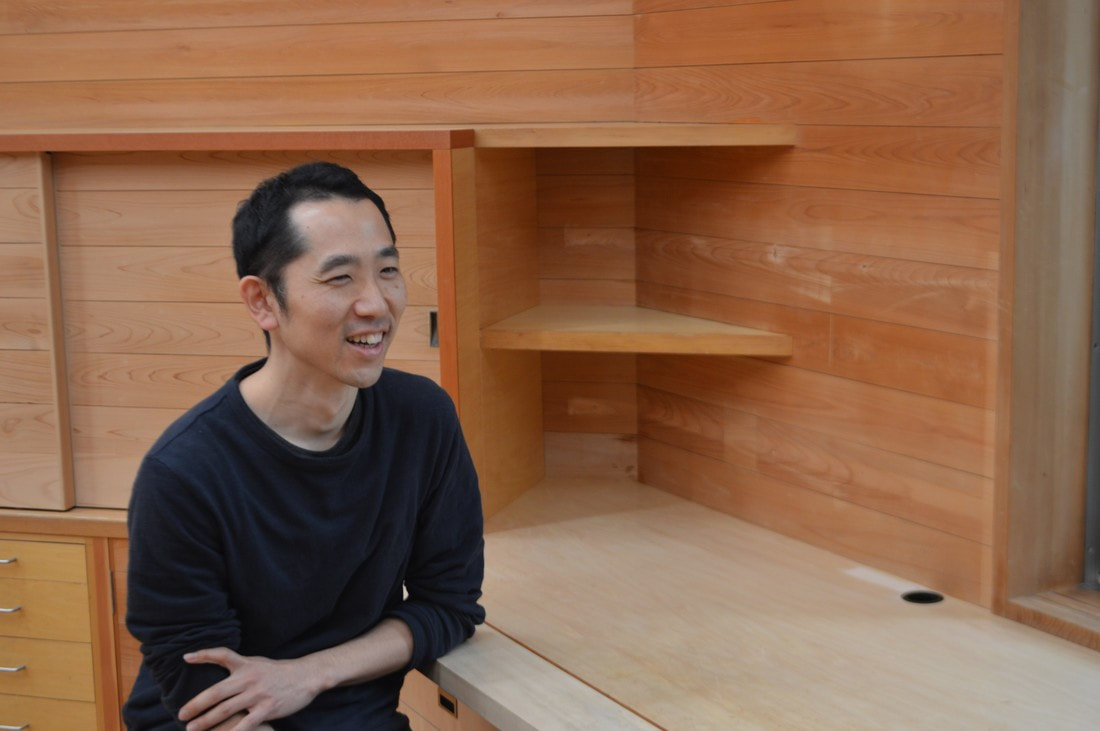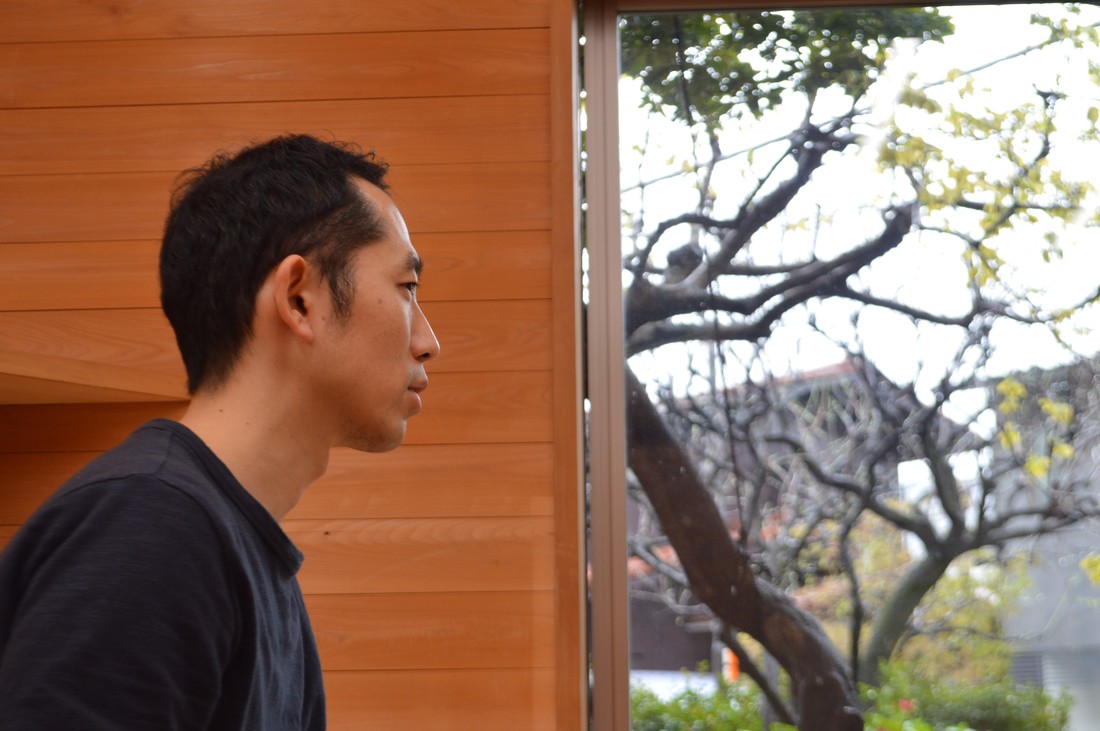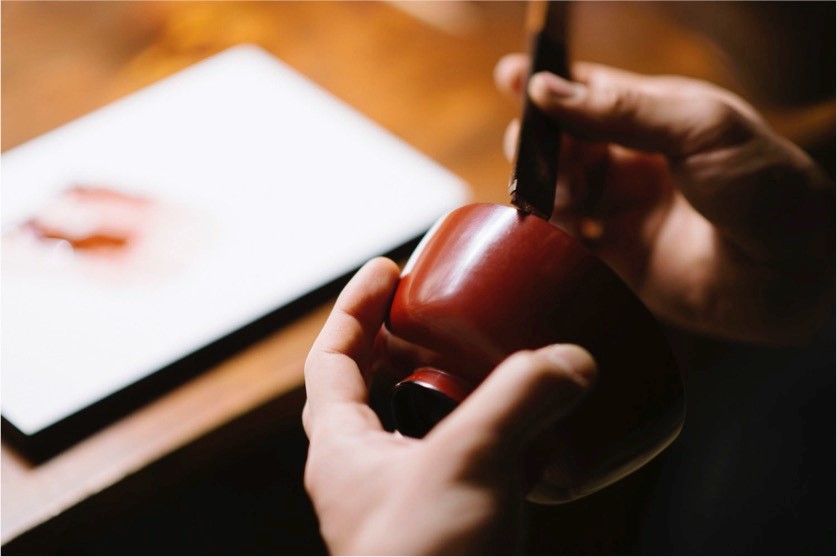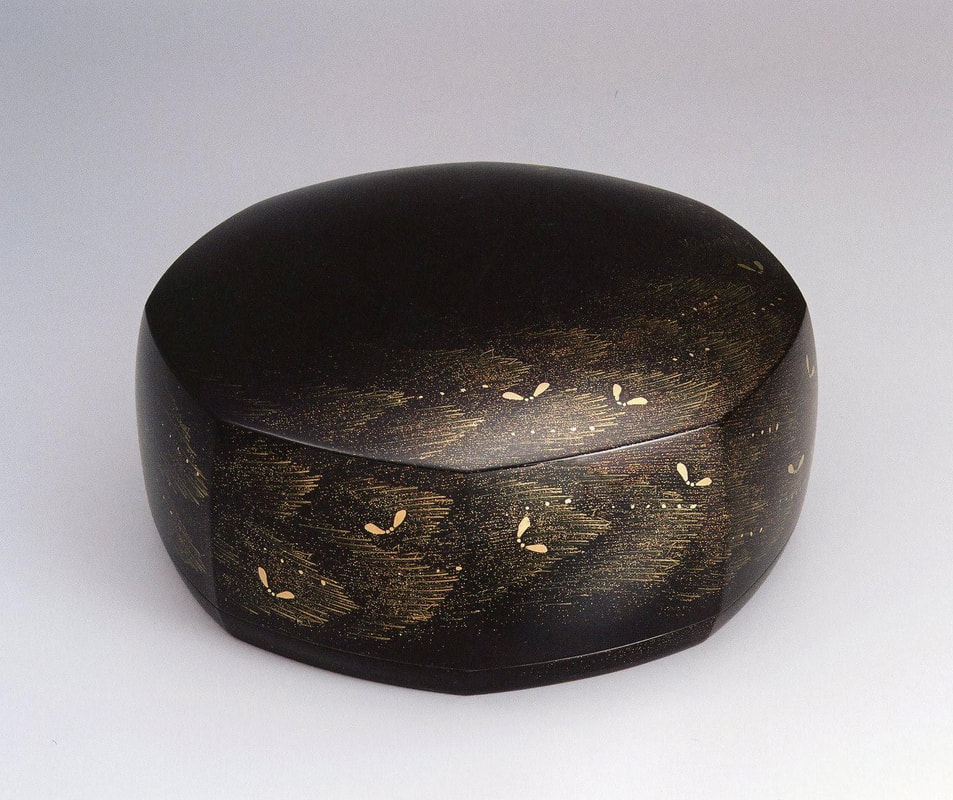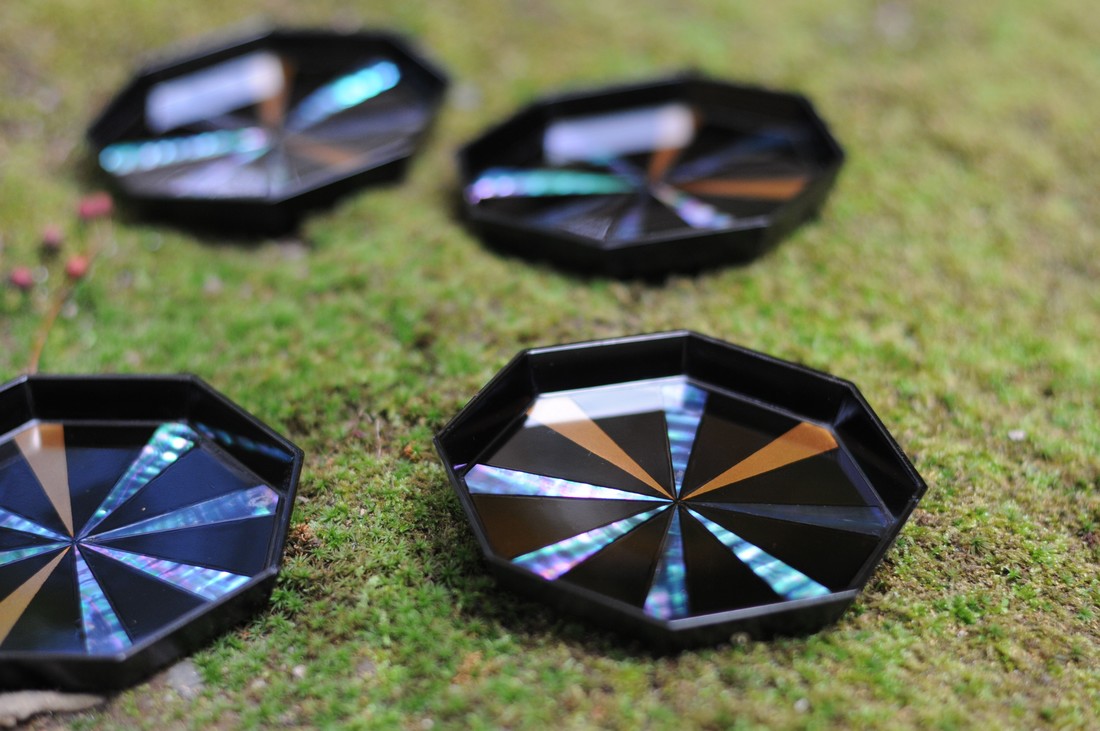|
A little after noon on a drizzling Saturday, I visited lacquer artist Tomoya Murose at his home and studio, feeling the pleasant sound of rain drops dripping on the leaves of the trees. Tomoya Murose, whose father is Kazumi Murose, a holder of Important Intangible Cultural Property (maki-e), has been involved in Urushi lacquer art since he was a child. "The next ten years or so will be a time to create my own works, not to meet people or talk about various things," he said, as he pushed himself to work on his Urushi laquer art. Interviewee Profile 1982: Born in Tokyo, Japan 2006: Graduated with a degree in Political Science, Faculty of Political Science and Economics, Waseda University 2008: Graduated from Wajima Lacquer Craft Training Institute, special course. Apprenticed to Kunie Komori and learned Urushi lacquering techniques. 2010 ~: Participated in "Urushi, Bowls and Utsuwa by Artists" every year 2013: Exhibition "Urushi by Tokanokai" in Helsinki, Finland 2017: The 34th Japan Traditional Lacquer Art Exhibition, Newcomer Prize. The 64th Japan Traditional Lacquer Art Exhibition, Newcomer Prize Currently a member of Mejiro Urushi Gakusha (Institute of Urushi Lacquer and Cultural Properties) What is Urushi?A craft technique using the sap (lacquer) from the poison oak tree. When it hardens, lacquer forms a coating that is resistant to moisture, acids, and alkalis, so it has been used in Japan since the Jomon period (approx. 16000 years ago) to make wooden products waterproof. Various decorative techniques have been handed down to the present day, such as "maki-e," in which pictures are drawn with lacquer and sprinkled with gold powder, and "raden," in which shells are attached to decorate the surface. I came to the conclusion that I wanted to do a noble and enjoyable job that could not be replaced, creating one out of nothing.- How does your day look like? I work as a workshop, repairing cultural assets, and I also create my own works at the same time. There is work that I have to take over from my father in the not-too-distant future, but I also want to make sure that I have time for my own work, so I try to fit my work into my private time as much as possible, but I can't always say that, so it's a constant struggle. - I heard that you started your career after graduating from university, but did you know from an early age that you wanted to work in this field? I didn't think of it as a job, but maybe I was a little aware of it. I think the first time I became aware of my family's work was when I explained my parents' work at school. I think 90% of my friends probably thought that Murose's family was a potter (laughs). I felt that my friends did not understand my parents' work at all, but at the same time, I wanted them to know. - Did you have a sense that your family house was different from others? I think so. For example, during the summer vacation in elementary school, we were given a homework assignment to make a fist out of clay. I was told by my parents that it was important to understand the details such as how to capture the shape and how to make it crisp. I feel as if I was being taught the basics of art without even realizing it. However, I usually enjoyed playing with my childhood friends every day by playing NES, climbing trees, and playing soccer. - When did you start to think clearly that this could be your job? From an early age, I listened to my parents' conversations from an artist's point of view, and I think my desire to know more naturally emerged. For example, my parents often used the term "sketching ability," but I had no idea what that meant. But my parents were living in a world that I didn't understand, and they seemed to be enjoying it. It might be fine to live without knowing, but I still felt that I wanted to know what it was all about. - Did you try to learn about your parents' work when you were in school? No, not really. I majored in political science at university and was involved in various club activities, so I wasn't really interested in art. To tell you the truth, I was a bit of a klutz who often dropped things. I don't think I, or anyone around me, ever thought I would be doing this kind of work. However, I was interested in my father's work, and I thought that I could use this environment to play a role in connecting the world with my parents' work. - How did you become interested in spreading the word out there? When I was in the fifth grade, I went to the United States for the first time on my parents' business, and it left a very good impression on me. My father seemed to enjoy it, and I was very excited to know that there was so much more to the world than I knew. I felt that it was very important for me to tell the world out there and to be able to pass it on. - So your experience at that time influenced you to go into the field of Urushi? Yes, it did. When I was in my third year of college, I told my father that I wanted to pursue a career in Urushi lacquer ware. I came to the conclusion that I wanted to do a noble and enjoyable job that could not be replaced by creating one out of nothing. If you don't keep questioning and constantly updating the world you can see, you will never be able to create something that resonates with you.- I heard that you went to Wajima for training after graduating from university. In the first year at the training center in Wajima, you learn the basics, and in the second year, you create your own designs. I remember thinking, "Oh, I'm going to be doing this for the rest of my life". I was troubled by the fact that a neatly made work was not necessarily a good one. I was often disappointed when I couldn't give shape to the world view I had in mind. - What kind of worldview did you want to create at that time? It is still relevant today, but I think I wanted to create a sense of depth and atmosphere. When I was working on it, I was desperate, but when the work was finished and I was able to look at it from a slightly different perspective, it was not at all what I had expected, and I was disappointed. I think that was a good experience for me now. I felt that I had to try to look at things with objectivity while making them. Now that I think about it, maybe I didn't have enough depth. At the time, my self-assertion and desire for self-expression were at the forefront, but that didn't allow me to create the atmosphere and worldview that I wanted. As I continued to create works over and over again, my desire to create good works of art while asserting myself in order to survive became stronger. - What is the "depth" that you are talking about? It is something that appeals to you, something that moves you. In order to create something like that, you have to keep questioning the world you can see and keep updating it. A work that only asserts itself will not easily resonate with the heart. What does it mean to be alive? This is the question that I will continue to ask throughout my life through Urushi.- Has there been any change in your worldview recently? The past few years have been a very troubling time for me. What is the point of creating more new things in a world that is full of all kinds of things? What on earth do I want to achieve by using my energy to make art? It's not enough to just make beautiful things, I thought, and I was stuck. After such a period of time, I now have an image of where I want to go and what I want to achieve in my lifetime, and I am able to create works of art with a positive attitude. I would like to continue to improve my skills, focusing on creating works for traditional craft exhibitions. - Something you want to achieve in your life time ? I think I would like to be able to express my own view of the world in response to questions such as what it means to live and what life is. I am interested in thinking about the meaning of my existence and the fact that I am here now, making art, through the history of people who have gone through various periods of time. I would like to express such a theme through motifs such as plants, using what I have thought about and seen as the essence of my work. For example, there are many different kinds of academics in the world, but I think the goal is the same. Everything is a way to express the meaning of one's existence here in this world, and I believe that art is the same. Perhaps "living" itself can be described as an artistic activity. I believe that this is a human activity that has not changed. Through Urushi, I would like to continue to challenge this question for the rest of my life. Interview: Yuki Kitamura, Kaoru
Translation: Kaoru
0 Comments
Leave a Reply. |
NC InterviewExploring lives of young practitioners of Japan's artistic heritage. - List -
01. [Dance] Nakamuraryu - Ume Nakamura (Part1) 01. [Dance] Nakamuraryu - Ume Nakamura (Part2) 02. [Sing] Itchu-bushi - Ryochu Miyako 03. [Sencha tea] My Sencha Salon - Iga Michiho 04. [Flower Arrangement] Sekiso school - Shoko Okudaira (Part1) 04. [Flower Arrangement] Sekiso school - Shoko Okudaira (Part2) 05. [Urushi Laquer] Urushi artist - Tomoya Murose 06. [Glass art] Edo-kiriko Kobayashi - Kohei Kobayashi (Part 1) 06. [Glass art] Edo-kiriko Kobayashi - Kohei Kobayashi (Part 2) 07. [Tea] Edosenke - Hiroyuki Kawakami 08. [Tatami] Tanaka Tatami - Hiroyuki Tanaka 09. [Lacquer brush] The 10th generation of the original lacquer brush artisan - Torakichi Izumi |

